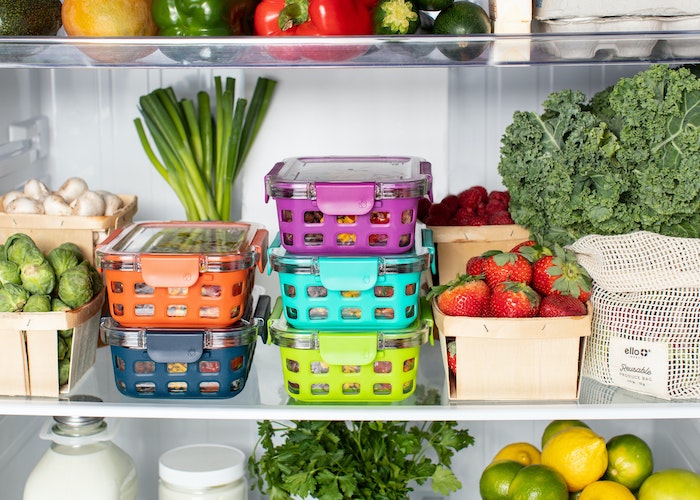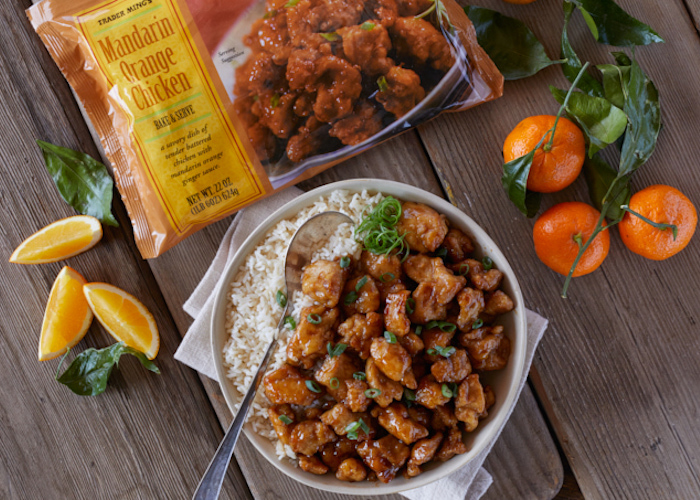How Minimizing My Waste Helped Me Maximize My Grocery Budget

When I first started tracking my spending, I was shocked to find how frequently I went over-budget in the food & dining category. I immediately cut back on eating out and committed to cooking as many meals at home as possible. I figured this small change would be the key to keeping myself under budget, and soon the numbers on my Mint app would switch from red to green. This was true until I started eating out whenever I ran out of ingredients because they spoiled faster than I could actually cook them.
I know from reading many TFD articles that there’s far more to saving on food than simply making the switch to home cooking. If you’re like me and find yourself buying 4 bags of dark chocolate Pretzel slims and forgetting to get eggs, you’ll understand the first step is learning how to properly grocery shop. Yes, we all know shopping the sales is great, but it won’t help much if you aren’t smart about what you’re buying in the first place.
Ultimately, what helps me save on groceries is determining how I can maximize the use of my ingredients. This means stretching my food supply to ensure that waste at an absolute minimum -– or, ideally, zero. I didn’t realize how much money I was losing on the food I wasn’t even eating. Consider this example:
Greek yogurt at my grocery store costs $4.50 for 17.5 oz. This means I should get three nearly 6 oz. servings for roughly $1.50 each.
Let’s say I had it twice, but forgot about it for a few weeks and let it spoil…I would end up losing $1.50. It didn’t sound like much until I realized yogurt wasn’t the only thing going to waste, and how frequently I was replacing this spoiled yogurt with a new container to combat the wastefulness.
Minimizing waste is one of the key goals for business owners in order to maximize their profits. Although you probably aren’t cooking to make money, it’s beneficial to learn how to avoid throwing money (literally) in the garbage can. Here are some of the rules I have for myself that help prevent waste and save money.
1. Don’t buy everything you need all at once.
95% of the time I went on a massive grocery haul I over-bought. I had ideas for various recipes I wanted to try out but never got around to, and consequently ended up with wasted ingredients. In order to spare my refrigerator the stench of cauliflower and zucchini, I decided to break up my shopping trips by category.
Once a month, I buy my non-perishables. This is when I purchase canned goods (beans, canned corn, rice, etc.) and other items with long shelf lives. Prior to heading to the store, I calculate a predicted usage amount. If a can of beans serves as a base for two meals, I know I’ll probably eat them weekly, so I’ll buy four cans of beans to yield eight potential servings. Since this non-perishable food, I don’t feel too bad not using it, because these items can be used next month.
During another shopping trip (usually bi-weekly) I’ll purchase dairy and bread-related items. I always buy my produce weekly, and I only buy enough to last for the week. This is where the classic meal planning trick comes in: only buy what you’re actually going to use.
I also recognize that not every person is afforded the same access to grocery stores that I am in the suburbs. When I lived in the city the problem with breaking up my grocery trips was I simply never had any time. Thankfully, many chain grocery stores provide delivery service, which is a great way to maintain a stock of non-perishable items at all time.
2. Shop meals, not ingredients!
Sometimes when we first decide we’re going to try our hand at cooking we get a little over ambitious. And that’s okay — we should be interested in trying out new cuisines. But when on a budget, it’s time to lay the hammer on our Food Network fantasies and realize we don’t have an arsenal of seemingly endless ingredients to choose from.
Much like how stylists insist “shop outfits, not pieces,” the same holds true for groceries. Don’t buy tomatoes because you want tomatoes; buy them because you know you’re going to make bruschetta or salsa. Give each ingredient a purpose, not just an excuse to take up space.
Another trick that’s also helped me is choosing a weekly theme for my dinners. This means I could choose “Southwestern” as the theme for one week and buy ingredients that work for multiple dishes. Quesadillas one night, taco salad the next. It challenges me to buy less, and to be more creative in the kitchen.
Don’t know what you can make? There’s an app for that. Yup: Supercook is one of them; you tell the app what ingredients you have, and it gives you ideas of what to cook. It’s an incredible resource for both the new and experienced cook, because everyone can benefit from buying less while still making the most of what they already have.
3. Be realistic about your consumption and cooking abilities.
When I first started cooking at home, I wanted to buy everything to make curry and enchiladas and potato salad all in one week not realizing how very different all three of these meals were. I also knew with my schedule, I would likely only get around to actually making one of them, if any at all. This led to frequently eating cereal when I was too lazy to dirty up the kitchen yet again for a culinary adventure.
One way to combat this is to be honest with yourself about your eating habits. Note the things you already feel confident making even when it’s late night or early morning. Trust, these are the things that will get eaten more than anything else. If you have a set grocery budget, label these items as a priority, and everything else as an extra. I do not need to buy everything to make red velvet french toast when I know damn well the forecast says there’s an 80% chance I’ll have avocado toast again.
4. Remember, your freezer is your friend!
Of all the inventions of the 20th century, the ol’ ice box has to be one of the smartest. When you live alone (or with one other roommate who’s always gone), it can be hard to finish all of the food you make buy before it dies inside a tupperware tomb. Prepping your meals and freezing them for the future is an extremely cost-effective way to prepare an emergency (and I say the term loosely because what some constitute as such varies) supply for yourself. When money is tight, you can defrost a soup you made and didn’t finish a month ago or some pizza crusts that you made.
While I don’t generally recommend freezing items like bread, technically, you can if you wanted to. The only issue I find is the texture becomes a little dryer if you freeze certain types. But let’s be real — if you smother a layer of avocado on the top, you’ll hardly notice something so minor.
5. Sharing is caring!
I know, it seems strange to advocate giving food away in odder to save money, but hear me out. When I lived with multiple roommates, we used to do a dinner/brunch tradition where one person would be in charge of one meal for the whole house for a particular week. This was an effective way to ensure that certain ingredients were used and, consequently, actually eaten.
The way I see it, if someone is getting fed, food is not being wasted, and therefore the money spent is worth it. Also, because every week the responsibility rotated, when it wasn’t a person’s turn to cook, they were getting that meal for free. It is a very cool way to try new meals and bond with your roommates while also preventing food waste and, ultimately, keeping your money out of the garbage can.
Savanna is a freelance writer in Northern California whose hobbies include all things theater and dog-related. She hopes for a world where avocados will be included in the price of her entrée and a 12-step program is widely available to people who obsessively collect air miles.
Image via Unsplash




